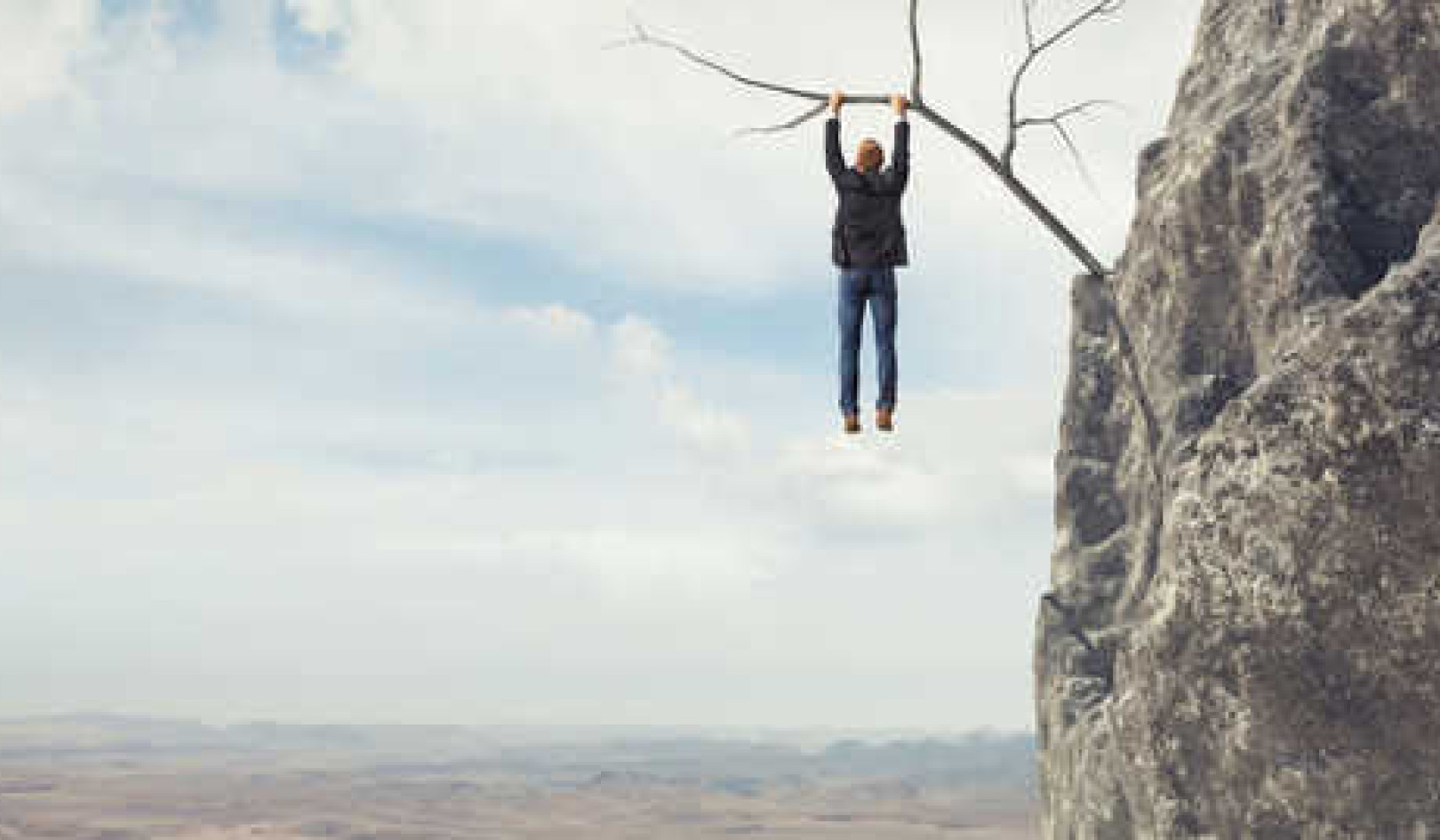
The Buddha's teaching of simple mindfulness or awareness as a way to enlightenment is particularly suitable for people today. The whole secret of mindfulness can be summed up in the two words: "Remember" and "Awareness."
Remember to be aware of your breath. Remember to be aware of where you are. Remember to be aware of what you are doing. Remember to be aware of what you say. Remember to be aware of what you feel. Remember to be aware of what you think.
Try it for a little while. Do you see why it is simple to say, but hard to do?
The key to mindfulness as a form of meditation lies with the breath. As with many forms of Buddhist meditation, the breath is used as a vehicle to calm the mind. If you have ever tried to quiet the mind you will be aware of why the Asian traditions refer to the "Monkey Mind." The mind is just like a captive monkey, swinging from branch to branch in its cage, restless, never still. This is particularly so when you try to persuade him to sit still. He is quiet only when he is asleep or when there is some food for him. So, to still the monkey mind we have to give it food, and that food is the breath. The Buddha's instructions on mindfulness are as follows.
Mindfully, breathe in, mindfully breathe out.
Breathing in a long breath, know, "I am breathing in a long breath."
Breathing out a long breath, know, "I am breathing out a long breath."
Breathing in a short breath, know, "I am breathing in a short breath."
Breathing out a short breath, know, "I am breathing out a short breath."
Aware of the whole breath in the body, train yourself to breathe in.
Aware of the whole breath in the body, train yourself to breathe out.
Aware of the calming effect of the whole breath in the body, train yourself to breathe in.
Aware of the calming effect of the whole breath in the body, train yourself to breathe out.
Awareness of the breath leads to other avenues of awareness. When you stand, sit, walk or lie down, know what you are doing. When you are eating, drinking, bending or stretching and even going to sleep, know what you are doing. In other words, whatever you are doing be fully aware of it. It should be obvious by now that the Buddha's approach to mindful awareness embraces the whole of life. It is living in the Eternal Present, whatever that may be for each person. All that we need to do is remember.
Any readers who try it will be able to confirm that it is nowhere near as simple as it seems. The moment we try to meditate, to be mindful, is the moment that the monkey seems to become most fractious. Thoughts that we would never have imagined come into our heads. Feelings arise that we did not know we possessed. Memories of events -- especially those in which we were hurt in some way -- that we have long forgotten are suddenly clearly recalled with the accompanying feelings and emotions. Aches and pains in the body of which we were unaware suddenly become real problems. What do we do with them?
The traditional answer is that if we become aware of them, observe them, but do not react to them, then they will cease to bother us. This is much easier said than done. I know some people find that if they can become aware of these things in a slightly detached and impersonal way, then they fade and eventually disappear. I have found that this can happen, but it does not always do so. If not, then it may be necessary to introduce some other factor such as a change in position, or even practice some other form of meditation. The important thing with regard to mindfulness is that if we choose to make changes we need to be fully aware of what they involve, and of the reasons for our choice.
The Buddha talks of four postures: sitting, standing, walking and lying down. It is important to remember that these four represent the whole of life. Many teachers talk only of sitting meditation, or sometimes of walking meditation. However, the vital essence of mindfulness is that it is a component of every waking moment. Even going to sleep, the bug-bear of most teachings about meditation, is highlighted by the Buddha as an opportunity for mindfulness. It is said that if we can be mindful at the moment sleep overtakes us, our whole time asleep is a meditation.
A similar teaching applies to the moment of dying. In Buddhism death is thought of as being very similar to sleep. If we can die in a state of awareness, then our transition to our next birth, wherever that may be, becomes a conscious one. However, it is not possible to achieve this state of awareness at the last moment, which is why mindfulness is something that we should practice at all times.
First, sit comfortably -- in a chair or on the floor -- for a few moments. No special posture is required.
In India, sitting cross-legged and upright was normal and natural, but it may not be so for you.
Just be aware of sitting comfortably. Now become aware of your breathing.
You can be aware of the breath through the rising and falling of the diaphragm,
or by watching the passage of air at the tip of the nose.
Do not try to change it;
mindfulness of breathing is not a breathing exercise.
It may be that as you watch the breath, it will become more gentle, deep and even on its own.
Whichever way you choose, just watch it for a few minutes, without any other aim in view.
If thoughts, emotions, feelings or sounds intrude, note them, and return to watching the breath.
Try not to have any sense of doing it well or badly. Just do it, and see what happens.
This is the first step in mindfulness. At first do not try it for too long. Five or ten minutes will be fine for a first effort, and even after you have practiced it for some time, do not consciously extend the time. Allow it to grow naturally. Remember that all meditation is a natural state, and nothing should be forced.
Now stand.
Let your feet be slightly apart, and be balanced on both of them.
Rock gently from side to side until you feel evenly balanced.
Now become aware of your breathing ... (repeat the steps above).
The only difference with this is that you may not want to do it for longer than three to five minutes at first. Later, as it becomes natural, you may find it a great help when standing in line, or waiting for a bus or train. The only difference with standing awareness practice is that you should do it with your eyes open, and your awareness should extend to the space around you. Do not do this with eyes closed.
From the standing position above,
Walk slowly forward some seven to ten paces.
Turn around, being aware of what you are doing,
Of your weight shifting from one foot to the other,
Of the motion of turning.
Pause for a moment, balanced on both feet.
Then set out again, walking slowly back to where you started.
Turn again ...
Continue walking mindfully like this for five, ten, fifteen or twenty minutes.
As with the other meditations, it is best to start with a short time and allow it to increase on its own as it feels comfortable.
This meditation is also done with eyes open, with your vision fixed on the ground about six to eight feet in front of you. It is best performed in bare feet, or at least without shoes. If this is not possible for you, you can still do it with shoes on. The important thing is the awareness, and this is made easier if you can feel the floor (or ground) beneath your feet. As you walk slowly be aware of all the feelings that are generated. You may well find that your balance is not as good as you thought it would be. Note this, but do not worry about it. It will improve naturally. Above all, as with any other meditation, if it makes you feel uncomfortable, stop!
The final posture for mindful meditation is lying down. This is often neglected by teachers of meditation, because of the dangers of falling asleep. However, I do not believe that sleep is such a bad thing. If you need sleep, you will probably fall asleep. If it happens on a regular basis, try to note exactly how and when it happens. The goal is awareness of whatever happens, and falling asleep is a perfectly natural part of "whatever."
Traditionally, one should lie down on the right side, but this is a matter of individual preference.
Become aware of the action of lying down,
Acknowledge the reasons (for example weariness or pain) that cause you to select this method of meditation.
When you are comfortable, become aware of your breathing as for the sitting meditation, and of your thoughts, emotions and feelings.
If you have practiced sitting meditation, note how this differs from it. If you feel sleepy, fix the mind more securely on the breath
But don't worry if you do fall asleep.
(In fact, be grateful for it.)
We have now looked at the four postures of mindfulness, and at the role of the breath as the gateway to awareness. It is said that this practice alone is enough to lead us to enlightenment. However, if the practice appeals to you, it is good to study with a teacher, preferably someone well-versed in the Theravadin tradition, which emphasizes simple mindfulness as a practice, and possibly with a group. Be aware that a teacher might emphasize other aspects of meditation, depending on their experience. In the end, it is your experience that matters most. Remember that meditation is not a cure-all, and the other aspects of the Eightfold Path -- or their equivalent in your own faith -- should not be forgotten.
Mindfulness has many other applications. A good practice is to be found in the process of eating. I deliberately refer to "the process of eating" rather than just "eating" because this is closer to the idea of what mindfulness is in such a situation. In Zen, it is said: "When you eat, just eat" This is perfectly true. Being mindful is not thinking about an action; it is just being aware of every aspect and letting it impinge upon your mind rather than allowing the mind to impinge upon it.
Reflecting on this, let us consider eating. First of all, most of us tend to eat too quickly. Even when eating is a social occasion devoted to pleasure, it still tends to be secondary to the conversation. In retreat, eating is sometimes done in silence, but this possibility of mindfulness is often spoiled by the imposition of time. For eating to be truly mindful, we need to be unhurried and un-distracted. Then eating becomes the perfect mindfulness exercise, involving all the five senses, or six if you include -- as does Buddhism -- the mind.
Starting with the sight and smell of the food, sensations arise. The mouth may water (taste), the stomach rumble (hearing), and the mind summon up all kinds of images. As the food is served (touch), there are additional sounds and smells. During the serving, and before actually eating, we can allow thoughts of gratitude to arise, for the people who grow the food, for those who transport it, for those who prepare and cook it, and for the food itself. Eating the food should be a leisurely process. Conveying a portion to the mouth, chewing, tasting, relishing and enjoying are all a part of the process. The spoon or other tools should be at rest during the process, and not busy fishing for the next portion. There are also sounds, smells and the possible requirements of other diners to be aware of, such as the need for passing the salt.
If the meal is not a silent one, then conversation should be limited and relevant. Listening is more important than saying our piece. There may be many other opportunities for mindful eating during the sharing of a meal, but I will not list them, as I am sure I have said more than enough for you to try for yourselves. Further opportunities occur during the clearing and cleaning processes, and it is important not to waste the wonder of a mindful meal with the clamor of chattering afterwards. Instead, allow a space where all that you have discovered during the mealtime can soak into your being and unfold its fruits in your life.
Reprinted with permission of Seastone, an imprint of Ulysses Press.
©2002. http://www.ulyssespress.com
Article Source:
You Don't Have to Sit on the Floor
by Jim Pym.
 This is a Buddhism book for the rest of us. Jim Pym explains how to make Buddhism part of daily life while being true to one’s own customs and beliefs. He points out that Buddha never asked people to accept anything simply because it was religious doctrine. Brought up as a Christian, he draws on his own experiences to show how opening the way for East to meet West enriches spirituality. An active member of a Buddhist-Christian dialogue group for over ten years, Jim firmly believes there is one thing better than being either a Buddhist or a Christian — being both.
This is a Buddhism book for the rest of us. Jim Pym explains how to make Buddhism part of daily life while being true to one’s own customs and beliefs. He points out that Buddha never asked people to accept anything simply because it was religious doctrine. Brought up as a Christian, he draws on his own experiences to show how opening the way for East to meet West enriches spirituality. An active member of a Buddhist-Christian dialogue group for over ten years, Jim firmly believes there is one thing better than being either a Buddhist or a Christian — being both.
Info/Order this book.
About the Author
Jim Pym became a Buddhist through hearing a monk lecture on the Kalama Sutra, in which the Buddha tells us only to believe what is true and helpful for us. This has been the key to his spiritual journey. He is currently the coordinator for the Pure Land Buddhist Fellowship, editor of their journal, Pure Land Notes, and a member of the Council of the Buddhist Society, London. Jim is also a member of the Religious Society of Friends (Quakers), and a member of a Buddhist-Christian dialogue group. He also teaches meditation, and is active in leading retreats and workshops. Jim's other books include Listening to the Light (Rider Books) on Quaker spirituality, and The Pure Principle (Sessions of York) on Quakers and world faiths.

























